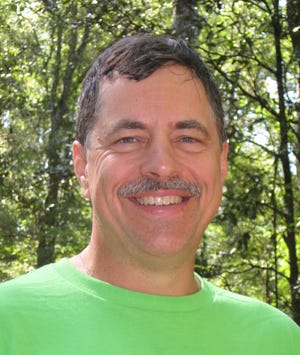
The Forgotten Coast has a wealth of history and one seems to run into it at every turn, whether it is meeting one of the coast’s old timers, climbing the reconstructed Cape St. George Light or the original Crooked River Lighthouse near Carrabelle, touching old-growth coastal slash pines on St. George Island that were once “cat-faced” to collect sap for turpentining, or witnessing the many eroding Indian middens on St. Vincent Island that are spilling out into Apalachicola Bay.

“It was a tough place to be, but in retrospect, it was good because it really conditioned us for the battles we fought in New Guinea, the Netherlands and the East Indies,” recalled former camp resident Henry C. Allan in “Tallahassee Magazine.” You can learn all about it at the Camp Gordon Johnson Museum in Carrabelle.
The tall dunes of Cape San Blas in St. Joseph Peninsula State Park make for a fitting bookend on the western end of the Forgotten Coast. The cape is a long thin tail of land, curling around St. Joe Bay and tapering into the Gulf. It is perhaps the wildest peninsula left in Florida, extending over eight miles. The dunes on the Gulf side are up to three stories tall.
When standing on top of one of those high dunes, the peninsula appears to be a still sea of green, gray and white. The interior is made up of tough bonsai-like pines, twisted shrubs and fragrant wild rosemary. The plants stubbornly try to survive against torturing winds, salt and storms, and some don’t make it, especially near the dunes. Over time, the dunes will move and roll like slow moving waves, robbing roots of essential soil, seeming to freeze their dying gasps in mid-air.
Mexico Beach, Panama City and even inland communities such as Marianna experienced catastrophic devastation. “Everything is just gone!” exclaimed a woman in Mexico Beach.
Hurricane Michael was the worst storm to hit the Florida Panhandle in recorded history, and it closely followed the highly destructive Florence that hit the North Carolina coast the previous month. It goes to reason that if the oceans are still warm by the second hottest September on record, a tropical storm could turn into a hurricane overnight, and ramp up to be a killer.
But the Forgotten Coast and all of Florida’s coast for that matter has seen many hurricanes over time. People rebuild or move inland. Barrier islands shift and slowly regenerate dunes, trees, sea oats and other vegetation. Birds and animals rebound. Peaceful scenes return, the destruction nearly forgotten. The coast is dynamic.

The largest island along the Forgotten Coast is the triangular shaped St. Vincent, completely undeveloped and protected as part of a 12,492-acre national wildlife refuge. Native American names for this large land mass are not known. The current name was given by Franciscan friars in 1633 while visiting Apalachee Indians in the area.
The Nature Conservancy purchased the island in 1968 for $2.2 million and later sold it to the United States Fish and Wildlife Service for establishment as a wildlife refuge. Primitive weapons hunts of native deer, hogs and the sambar deer occur in fall and winter. The endangered red wolf was reintroduced in 1990 whereupon wolf families freely roam the uninhabited island, the only wild wolf population in Florida.
To the east of St. Vincent, St. George and Dog islands mark the end of a chain of barrier islands that have been formed by sediments deposited by the Apalachicola and Ochlockonee rivers. The numerous wild islands east of Ochlockonee Bay are chunks of land that have been isolated by a millennia of rising sea levels, thus the reason why their shapes are not as elongated. St. George Island State Park and Bald Point State Park are natural highlights.
It is along the Forgotten Coast and Nature Coast where sea level rise is most apparent, partly because there are few sea walls or other man-made structures to mask it. Palms, cedars, slash pine and other trees are toppling over or they are standing skeletal and bleached, like erect corpses.
The barrier islands of the Forgotten Coast form a border around the massive Apalachicola Bay, the recipient of waters from the Apalachicola River, Florida’s largest in terms of water volume. I once joined a group of high school students in putting out various seine and plankton nets into the bay and was amazed to discover that every ounce of water teemed with life. We found numerous species of fish and thousands of tiny shrimp and zooplankton. This place where fresh and salt water mixed together felt like a living organism, thus one reason it is a massive spawning area for shrimp and many types of fish that are enjoyed in seafood restaurants throughout Florida.
The seafood capital of the Forgotten Coast is the town of Apalachicola and it has also emerged as the cultural anchor. Once a bustling port city where steamships brought in cotton, lumber, turpentine and other products from upriver communities, the town is now a center for both seafood harvesting and distribution and businesses that cater primarily to tourists and seasonal residents.